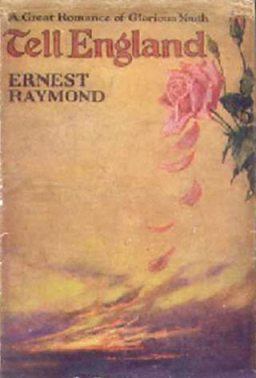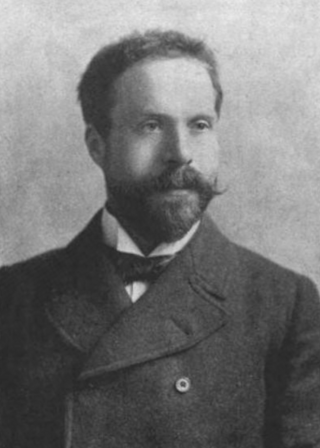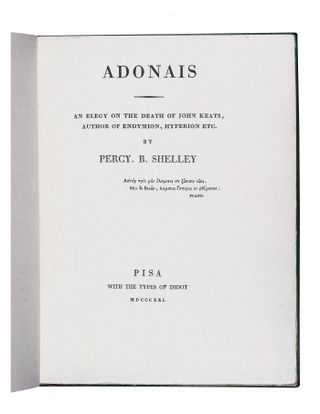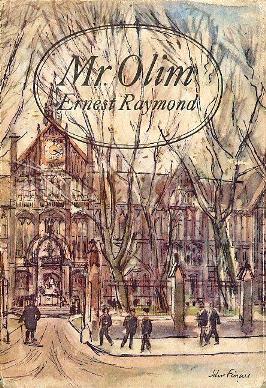
John Keats was an English poet of the second generation of Romantic poets, along with Lord Byron and Percy Bysshe Shelley. His poems had been in publication for less than four years when he died of tuberculosis at the age of 25. They were indifferently received in his lifetime, but his fame grew rapidly after his death. By the end of the century, he was placed in the canon of English literature, strongly influencing many writers of the Pre-Raphaelite Brotherhood; the Encyclopædia Britannica of 1888 called one ode "one of the final masterpieces". Jorge Luis Borges named his first time reading Keats an experience he felt all his life. Keats had a style "heavily loaded with sensualities", notably in the series of odes. Typically of the Romantics, he accentuated extreme emotion through natural imagery. Today his poems and letters remain among the most popular and analysed in English literature – in particular "Ode to a Nightingale", "Ode on a Grecian Urn", "Sleep and Poetry" and the sonnet "On First Looking into Chapman's Homer".

James Henry Leigh Hunt, best known as Leigh Hunt, was an English critic, essayist and poet.
This article contains information about the literary events and publications of 1818.
This article contains information about the literary events and publications of 1816.

Tell England: A Study in a Generation is a novel written by Ernest Raymond and published in February 1922 in the United Kingdom. Its themes are the First World War and the young men sent to fight in it.

"Ode to a Nightingale" is a poem by John Keats written either in the garden of the Spaniards Inn, Hampstead, London or, according to Keats' friend Charles Armitage Brown, under a plum tree in the garden of Keats' house at Wentworth Place, also in Hampstead. According to Brown, a nightingale had built its nest near the house that he shared with Keats in the spring of 1819. Inspired by the bird's song, Keats composed the poem in one day. It soon became one of his 1819 odes and was first published in Annals of the Fine Arts the following July. The poem is one of the most frequently anthologized in the English language.

The Pall Mall Gazette was an evening newspaper founded in London on 7 February 1865 by George Murray Smith; its first editor was Frederick Greenwood. In 1921, The Globe merged into The Pall Mall Gazette, which itself was absorbed into The Evening Standard in 1923.

Agnes Mary Frances Robinson was a poet, novelist, essayist, literary critic, and translator. She was the elder sister of the novelist and critic Frances Mabel Robinson.

Charles Wentworth Dilke (1789–1864) was an English liberal critic and writer on literature.

Ernest Percival Rhys was a Welsh-English writer, best known for his role as founding editor of the Everyman's Library series of affordable classics. He wrote essays, stories, poetry, novels and plays.

William Sharp was a Scottish writer, of poetry and literary biography in particular, who from 1893 wrote also as Fiona Macleod, a pseudonym kept almost secret during his lifetime. He was also an editor of the poetry of Ossian, Walter Scott, Matthew Arnold, Algernon Charles Swinburne and Eugene Lee-Hamilton.

Adonais: An Elegy on the Death of John Keats, Author of Endymion, Hyperion, etc. is a pastoral elegy written by Percy Bysshe Shelley for John Keats in 1821, and widely regarded as one of Shelley's best and best-known works. The poem, which is in 495 lines in 55 Spenserian stanzas, was composed in the spring of 1821 immediately after 11 April, when Shelley heard of Keats' death. It is a pastoral elegy, in the English tradition of John Milton's Lycidas. Shelley had studied and translated classical elegies. The title of the poem is modelled on ancient works, such as Achilleis, an epic poem by the 1st-century AD Roman poet Statius, and refers to the untimely death of the Greek Adonis, a god of fertility. Some critics suggest that Shelley used Virgil's tenth Eclogue, in praise of Cornelius Gallus, as a model.
Pamela Sydney Frankau was a popular English novelist from a prominent artistic and literary family. She was abandoned by her novelist father Gilbert Frankau at an early age, and she became a prolific writer. She stopped writing for a decade after the death of her lover, the poet Humbert Wolfe, in 1940. After serving in World War II, she was married for several years to an American naval officer, but returned to England and resumed her writing career.
Nationality words link to articles with information on the nation's poetry or literature.

Zastrozzi: A Romance is a Gothic novel by Percy Bysshe Shelley first published in 1810 in London by George Wilkie and John Robinson anonymously, with only the initials of the author's name, as "by P.B.S.". The first of Shelley's two early Gothic novellas, the other being St. Irvyne, outlines his atheistic worldview through the villain Zastrozzi and touches upon his earliest thoughts on irresponsible self-indulgence and violent revenge. An 1810 reviewer wrote that the main character "Zastrozzi is one of the most savage and improbable demons that ever issued from a diseased brain".

Mr Olim is a novel by Ernest Raymond, published in 1961 to critical acclaim by Cassell. It is often used by teacher training colleges to encourage students to analyse successful teaching.

Michael O'Neill was an English poet and scholar, specialising in the Romantic period and post-war poetry. He published four volumes of original poetry; his academic writing was praised as "beautifully and lucidly written".

The Upper Flask was a tavern near the top of Hampstead hill in the 18th century which sold flasks of water from the spa at Hampstead Wells. It was located in Heath Street. It was the summer meeting place of the great literary and political figures of the Kit-Kat Club such as Walpole. The tavern business ceased in the 1750s and the grand house subsequently became the private residence of ladies and gentlemen such as Lady Charlotte Rich, George Steevens and Thomas Sheppard.

Keble Howard was the pen name of John Keble Bell. He was an English writer and journalist, who wrote a large number of novels, short stories, sketches and plays, mainly light comic pieces, often depicting suburban life. One contemporary literary commentator described Howard as "a highly successful novelist and a moderately successful playwright".
Dorothy Hewlett was an English scholar specialising in 19th century literature, a novelist and playwright. Known for her stewardship of the Keats-Shelley Memorial Bulletin, she was a winner of the Rose Mary Crawshay Prize (1938) and a Fellow of the Royal Society of Literature.















